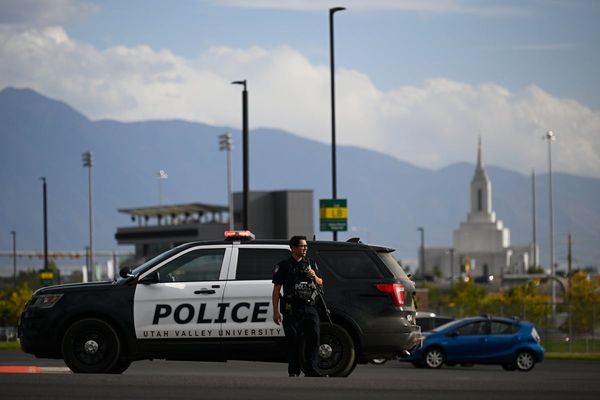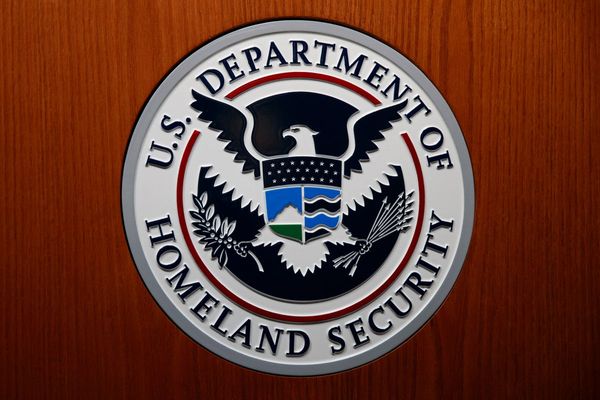
A new study published by the Centers for Disease Control and Prevention (CDC) supposedly shows that wearing a face mask in public places dramatically reduces your risk of catching COVID-19. The CDC summed up the results in a widely shared graphic that says wearing a cloth mask "lowered the odds of testing positive" by 56 percent, while the risk reduction was 66 percent for surgical masks and 83 percent for N95 or KN95 respirators.
If you read the tiny footnotes, you will see that the result for cloth masks was not statistically significant. So even on its face, this study, which was published in the CDC's Morbidity and Mortality Weekly Report on Friday, did not validate the protective effect of the most commonly used face coverings—a striking fact that the authors do not mention until the end of the sixth paragraph. And once you delve into the details of the study, it becomes clear that the results for surgical masks and N95s, while statistically significant, do not actually demonstrate a cause-and-effect relationship, contrary to the way the CDC is framing them.
That framing is part of a broader pattern. In 2020, the CDC went from dismissing the value of general mask wearing to describing it as "the most important, powerful public health tool we have." In September 2020, then–CDC Director Robert Redfield asserted, without any evidence, that masks were more effective at preventing infection than vaccines would prove to be. Even before the spread of the highly contagious omicron variant, Redfield's successor, Rochelle Walensky, implied the same thing, exaggerating the evidence supporting mask use in a way that made vaccination seem inferior.
The CDC consistently bends over backward to validate its recommendation that everyone, including children as young as 2, wear masks. It is thereby undermining its already damaged credibility by distorting what we actually know. In this case, the CDC is asserting a causal relationship without considering alternative explanations for the results it is touting.
The researchers identified 1,528 California residents who tested positive for COVID-19 between February 18 and December 1, 2021, then matched them to 1,511 California residents who tested negative. The "controls" were similar to the "cases" in terms of age group, sex, and the region of California where they lived but were not necessarily similar in other ways that could affect the odds of testing positive. That crucial point by itself means it is impossible to say whether masking accounts for the differences highlighted by the CDC.
The mask analysis was limited to 652 cases and 1,176 controls who "self-reported being in indoor public settings during the 2 weeks preceding testing and who reported no known contact with anyone with confirmed or suspected SARS-CoV-2 infection during this time." Overall, the subjects who said they "always" wore masks in indoor public settings were 56 percent less likely to have tested positive than the subjects who said they "never" wore masks. The comparison presented in the CDC's graphic is based on a subgroup of 534 subjects who "specified the type of face covering they typically used."
It seems obvious that people who "always" wear masks in indoor public places are more COVID-cautious than people who "never" do. While the researchers adjusted for vaccination, which unsurprisingly was more common among people who had tested negative, they "did not account for other preventive behaviors that could influence risk for acquiring infection." If mask wearers tend to avoid crowded spaces, spend less time indoors with strangers, and/or are more likely to keep their distance from other people—all of which are plausible—those precautions could partly or fully explain the differences that the CDC attributes to masking.
Data from the study reinforce the point that masking rates were not the only potentially relevant way in which subjects who tested negative differed from subjects who tested positive. While 78 percent of the COVID-positive subjects sought testing because they had symptoms consistent with the disease, that was the motivation for just 17 percent of the COVID-negative subjects. People in the latter group were nearly 50 percent more likely to say they had sought testing simply because they were curious about whether they had been infected—a motivation that suggests greater concern and caution. The COVID-negative subjects were nearly three times as likely to report that they were tested because they were undergoing a medical procedure, a prospect that may have made them especially keen to avoid infection.
While the possibility of systematic differences in "other preventive behaviors" is enough reason to be skeptical of the way the CDC is presenting these results, the study has several other problems.
When the researchers called people for interviews, just 13 percent of those who had tested positive and 9 percent of those who had tested negative answered the phone and agreed to participate. Those low participation rates make you wonder how representative the people interviewed by the researchers were.
The COVID-positive people who did not answer the phone may have been especially ill, for example, while the COVID-negative people who did participate may have been especially eager to discuss their experiences—perhaps because they had dodged the virus and attributed that outcome to precautions such as masking. The researchers note that "generalizability of this study is limited to persons seeking SARS-CoV-2 testing and who were willing to participate in a telephone interview, who might otherwise exercise other protective behaviors."
The fact that people knew their own test results may have introduced another bias. People who wore masks but nevertheless caught COVID-19 may have inferred that they were not as careful as they should have been, making them less likely to report that they "always" took that precaution. Conversely, people who tested negative may have retrospectively exaggerated the extent to which they wore masks.
University of California, San Francisco, epidemiologist Vinay Prasad, who discusses these and other weaknesses of the study in a recent Substack post, also notes that the purported effects described by the CDC are "implausibly large." Last September, a report on a randomized trial in Bangladesh described an 11 percent reduction in the risk of symptomatic infection among villagers who wore surgical masks. Now the CDC is claiming that surgical masks "lowered the odds of testing positive" by 66 percent—an effect six times as large. Walensky, meanwhile, has averred that wearing a mask "reduc[es] your chance of infection by more than 80 percent," although the CDC cited no evidence to support that startling claim.
"The paper is entirely, irredeemably flawed," Prasad concludes. "Its flaws are so evident that it should not have been published [or] promoted. When an issue is deeply polarizing, publishing bad science helps no one. It cannot convince skeptics, proponents don't need convincing, and it deepens mistrust in institutions."
Prasad has long been skeptical that general masking, especially with cloth coverings, has an important effect on virus transmission. He co-authored a recent review of the literature that described the evidence supporting the CDC's recommendations as weak:
Facemask efficacy is based primarily on observational studies that are subject to confounding and on mechanistic studies that rely on surrogate endpoints (such as droplet dispersion) as proxies for disease transmission. The available clinical evidence of facemask efficacy is of low quality and the best available clinical evidence has mostly failed to show efficacy, with fourteen of sixteen identified randomized controlled trials comparing face masks to no mask controls failing to find statistically significant benefit in the intent-to-treat populations. Of sixteen quantitative meta-analyses, eight were equivocal or critical as to whether evidence supports a public recommendation of masks, and the remaining eight supported a public mask intervention on limited evidence primarily on the basis of the precautionary principle. Although weak evidence should not preclude precautionary actions in the face of unprecedented events such as the COVID-19 pandemic, ethical principles require that the strength of the evidence and best estimates of amount of benefit be truthfully communicated to the public.
In his Substack post, Prasad laments that the CDC has not sponsored any randomized controlled trials to verify the effectiveness of face masks, which he calls "a catastrophic research failure," especially when it comes to "universal masking" in K–12 schools and day care centers. Even if you find the existing evidence more persuasive than Prasad does, the CDC's lily gilding is troubling. The agency has flagrantly failed to make sure that information on this subject is "truthfully communicated to the public."
While "well-fitting face masks and respirators effectively filter virus-sized particles in laboratory conditions," the authors of the California case-control study note, "few studies have assessed their real-world effectiveness in preventing acquisition of SARS-CoV-2 infection." Given this study's severe limitations (eight of which the researchers explicitly note), it does not do much to fill that gap. The CDC nevertheless claims the study shows that "consistently wearing a comfortable, well-fitting face mask or respirator in indoor public settings protects against acquisition of SARS-CoV-2 infection."
Both this study and the Bangladesh trial suggest that cloth masks are not effective in real-world settings—or at least that their benefits are not big enough to generate statistically significant results. But even on that point, the CDC, which only recently acknowledged that N95s are more effective than cloth masks, is maddeningly evasive. The CDC concedes that "a respirator offers the best protection," which is not quite the same as admitting that cloth masks may provide little or no protection against infection, especially by omicron.
The CDC's handling of this study has implications that extend beyond the empirical question of how well masks work. In this case and others, the agency has proven that it cannot be trusted to act as an honest broker of scientific information. The result is that Americans are increasingly skeptical of anything the CDC says, even when it is sensible and well-grounded. While the CDC's desperate attempts to back up conclusions it has already reached may be aimed at protecting its reputation and credibility, they have the opposite effect.
The post That Study of Face Masks Does Not Show What the CDC Claims appeared first on Reason.com.







